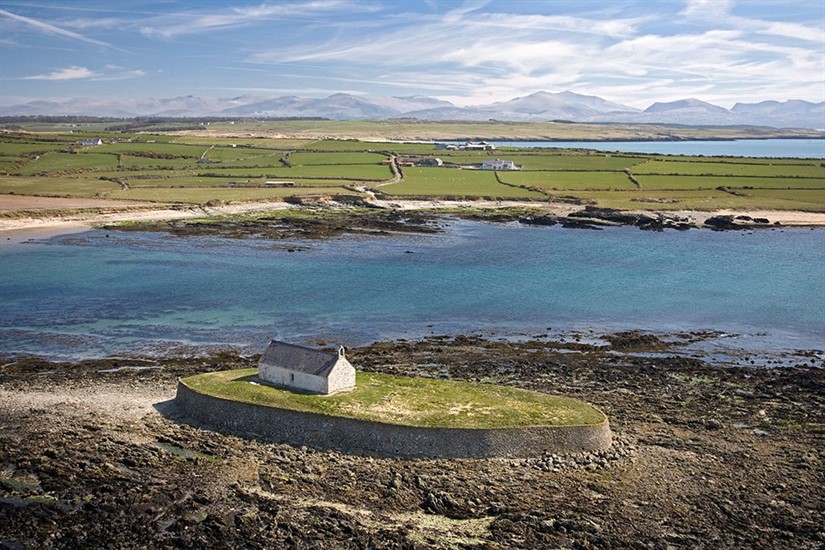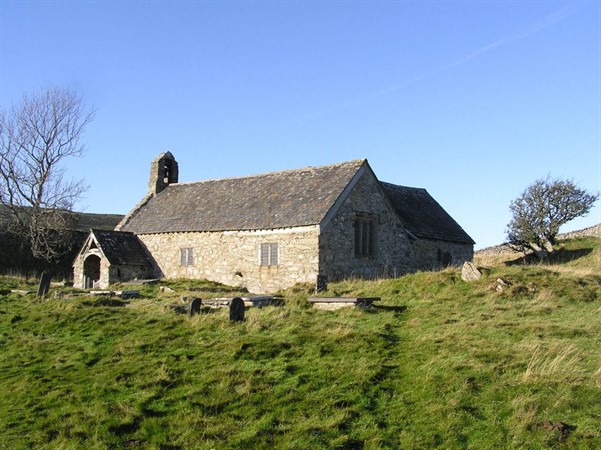Posted on 10/01/2018 by David
North Wales is home to some of the most wonderful churches, holy sites and places of worship. From imposing cathedrals to tiny stone chapels in the country, they all have a rich history and fascinating stories behind them.
In this blog mini-series, we are exploring some of our favourite churches. Why not take some time to visit these beautiful and sacred places, and learn about their rich and compelling histories?
St Cwyfan's, Aberffraw - the church in the sea
You can only reach St Cwyfan's at low tide...because St Cwyfan's is built on a tiny island in the sea. Follow the dead-end road out of Aberffraw village and park by the grass verge to access the stony beach and church. There's limited parking here and please be careful not to block any turning place.
The first church here, dating from the 7th century, would have been constructed from wattle and daub and may have been built on a promontory. Over the centuries the sea has eroded the land to create the island, known locally (and OS maps) as Cribiniau.
The original church may not have had a name and it's unlikely that the founding missionary would have named the church after himself. Instead, the name Cwyfan would have arrived many centuries later, after the original founding saint, and with the newer construction.
So who was St Cwyfan? It is thought he was Irish and lived between 498 – 618 AD. He was a disciple of St Beuno and we would have had the church built on Cribiniau toward the end of his life. Cwyfan was once a familiar name on Anglesey and it can still be heard today in the modern Irish version, Coemgen or Kevin in English.
The church you can see today dates from the 13th century. Originally the villagers would have had to cross the causeway to attend service but since 1872 St Beuno's in the village has been the main place of worship, largely making St Cwyfan's redundant. Even so, hardy souls still attend mass here on occasion.
Make sure you walk round the island (it won't take long) - there's even a graveyard too.

St Celynnin's (Llangelynnin), the church in the hills
Standing amongst grassy pastures and criss-crossing stone walls in the hills above Henryd village in the Conwy Valley, the magic of this church is its location. Whichever way you reach it (you can drive and park not much more than a field away, or wander the hills from the village of Rowen), you'll enjoy solitude and scenery. Look for the skull (complete with eyes) and bones on the east wall of the chancel, human remains found only recently. There's a holy well in the church yard too, but it's not much to look at. The views across the valley more than make up for it.
As with almost all churches, St Celynnin has seen its fair share of modifications. Originally dating back to the last half of the 14th century, newer additions include a 15th-century nave and a 16th-century roof. Next to the fine octagonal font is a rood screen, the partition separating the choir in the chancel from the congregation in the nave, which dates back to the 15th century.
And what of St Celynnin himself? Well, again, most of what we know is little more than stories rather than facts. Celynin lived in the 6th century, believed to be one of the sons of Helig ap Glanawg, a prince who lived at Llys Helig, the North Wales equivalent of the lost city of Atlantis.
Llys Helig is a rock formation on which it believed there was once a settlement, now under the sea off the coast of Penmaenmawr (the sea was once low enough to support this idea).
Celynin was related to one of the Prince of Gwynedd's sons and was brother to Rhychwyn, the saint associated with Llanrhychwyn church in the hills above Trefriw (another church well worth a visit).

Do you know of any sacred or holy places in North Wales with interesting or unexpected stories? We’d love to feature them in future blogs! Do let us know if you visit either of these churches and what you thought of them, you can even share your photos with us on Twitter using @NWHC.
Click here to read part six in the series.
Images courtesy: St Cwyfan's Church, Crown Copyright Visit Wales 2010. St Celynnin Church, Gaynor Roberts 2017.

